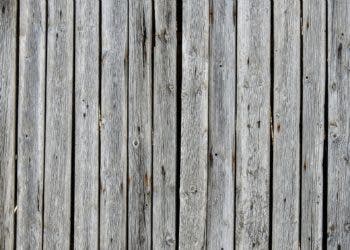
Our cities have become monuments of concrete and steel.
Concrete and steel are durable, but they’re also immense sources of greenhouse gases and require large amounts of energy to prduce. The building construction industry alone is responsible for around 10% of all global emissions and as the world’s population grows and urbanizes, that number will only to rise. But we don’t have much of a choice: to build tall buildings, we need steel and concrete.
Or do we?
A relatively new approach involving timber construction could help us build a high-rise using wood as the main material. A new, sweeping analysis published in Nature Communications showed that this would bring a series of profound and beneficial consequences. The results suggest that a global shift to mass timber could deliver a big blow to climate change, and could surprisingly even lead to more forests.
Cross-Laminated Timber
People have been building with wood for thousands of years. But Cross-Laminated Timber (CLT) brings a new innovation to the table. CLT was first developed in the 1990s in Europe, and it’s essentially formed by gluing together multiple layers of sawn lumber, with each successive layer oriented perpendicularly to the one below it. This arrangement imparts exceptional structural rigidity and stability, a distinct advantage over traditional lumber and even other engineered wood products.

Simply put, CLT offers great strength and stiffness while at the same time being a lightweight and regenerable material. By pressing and gluing layers of wood together, engineers can create massive, structural panels as strong as traditional materials, capable of forming the bones of mid- and even high-rise buildings.
Several high-rise buildings have already been erected across the world. In Wisconsin, a 25-storey building called Ascent stands at 87 meters (284 feet) and has only a concrete base and stair shafts made of concrete. The rest of the structure is made from CLT. In Norway, the 85.4-metre-tall Mjøstårnet tower also has the shafts made from CLT, as do several other high-rise buildings from Europe.
But researchers led by Kai Lan, from the North Carolina State University College took things even further. They asked what if we truly embraced this wooden revolution? If cities across the globe started demanding timber on an unprecedented scale, what would be the consequences for our planet’s forests, land, and climate?
They conducted lifecycle assessments of timber buildings, tracking the environmental effects of a product throughout its life cycle. They then combined this analysis with the Global Timber Model (GTM), an economic model that examines the effects of land use and policy on the global timber market.
Surprisingly, they found that building more large timber buildings would actually increase forest cover worldwide.
How Is This Possible?

CLT production relies on timber sourced from sustainably managed forests. Even so, common sense might suggest that a spike in demand for wood would lead to rampant deforestation. The study reveals that the opposite is more likely, and the reason is economics.
When demand for CLT rises, it drives up the price of wood. Suddenly, trees are more valuable. This sends a powerful signal to landowners around the world. As the researchers explain, “higher wood prices give landowners an incentive to plant more forests” and improve forest management.
This incentive sparks a chain reaction. The model predicts that landowners will convert low-value farmland into productive forests. They will invest more in managing their forests to make trees grow faster. The result is a significant expansion of the world’s forests, only part of which will be cut for construction. According to the projections, the widespread adoption of CLT would expand productive forestland by 30.7 to 36.5 million hectares by 2100 — an area roughly the size of Germany.
This is where the greatest climate benefit lies. These new and more intensely managed forests would pull huge amounts of carbon from the atmosphere. But the benefits don’t stop at the edge of the forest. More carbon is, of course, stored in the CLT panels that make up the buildings, which can last for 60 years or more. And for every wooden skyscraper we build, that’s one less made of steel and cement, avoiding all the emissions that come with producing those materials. Then, the buildings are far easier to recycle sustainably as well.
“When we increase usage of CLT, we decrease demand for those traditional construction materials. When you use less traditional materials, you emit less greenhouse gases while creating those materials,” Lan said. “All of these effects combine over the entire lifecycle of the CLT to create the environmental benefits.”
Can We Actually Build Our Cities from Wood?
The study shows that building with wood is far more than a simple material substitution — it can have massive, positive impacts for climate and sustainability. It is critical that policymakers are aware of these consequences, the researchers write. But can we actually do it?

CLT panels exhibit excellent capabilities for vertical load bearing, making them highly suitable for multi-story structures due to their inherent resistance to compression loads. But the biggest short-term benefit of CLT is speed. You can build structures up to 75% faster than with other methods, which makes it appealing for developers.
CLT buildings are substantially lighter than their concrete counterparts (by 30-75%). This reduces the load on the foundation, leading to smaller, less expensive foundations and considerable cost savings. It also requires fewer workers, though particular expertise is important. While timber high-rise buildings have been historically more expensive, well-designed mass timber buildings are becoming cost-competitive, often within +/- 3-5% of the total cost of concrete or steel buildings. When accounting for savings from speed and reduced labor, some projects can be 20-40% less expensive than cast-in-place concrete.
This doesn’t mean CLT doesn’t have its own disadvantages. The first challenge is simply limiting building codes. While this is starting to change, some areas simply don’t allow the construction of large timber-based buildings. Achieving required fire and acoustic ratings often requires additional materials, and CLT is susceptible to decay if exposed to sustained moisture (so it usually requires an envelope).
But, all things considered, CLT buildings are already becoming cost competitive without considering the environmental advantage. When you factor those in, it starts to become more and more appealing. Cities could offer subsidies for sustainable, green buildings and we could, realistically, build at least some parts of our cities from wood.
A Possible Way Forward
So, can a skyscraper made of wood truly help build a better world? The research suggests the idea isn’t just possible; it’s powerful. The very act of choosing timber can create an economic ripple that leads to more trees in the ground, turning our cities into part of the solution, not part of the problem.
The question is no longer if we can build our cities from trees, but how we will choose to do it.
Journal Reference: Kai Lan et al, Global land and carbon consequences of mass timber products, Nature Communications (2025). DOI: 10.1038/s41467-025-60245-y.






